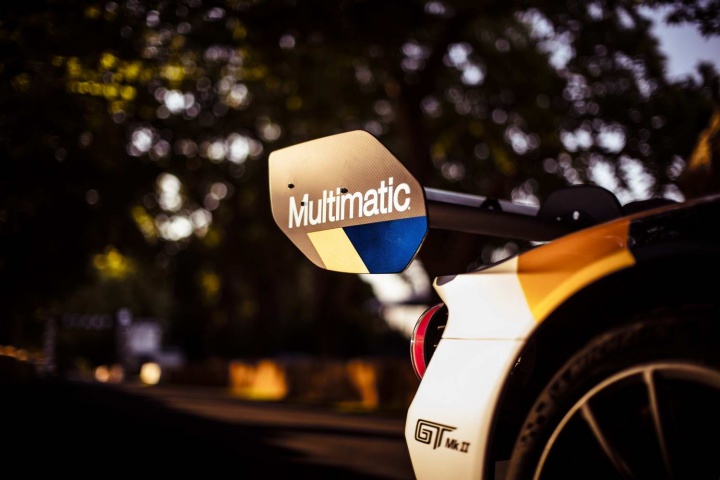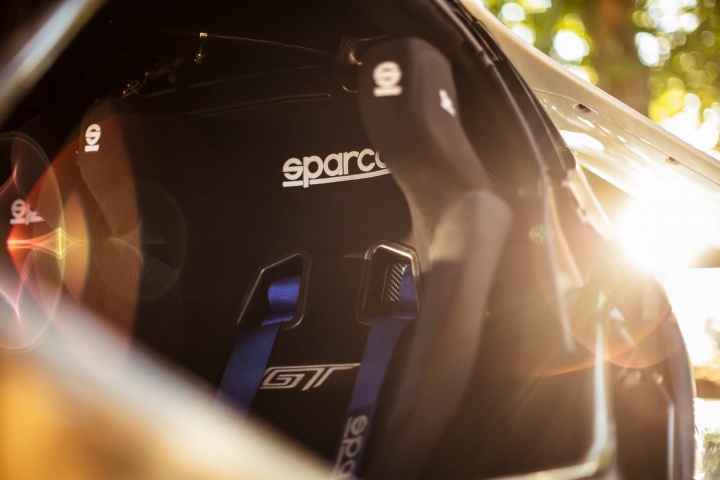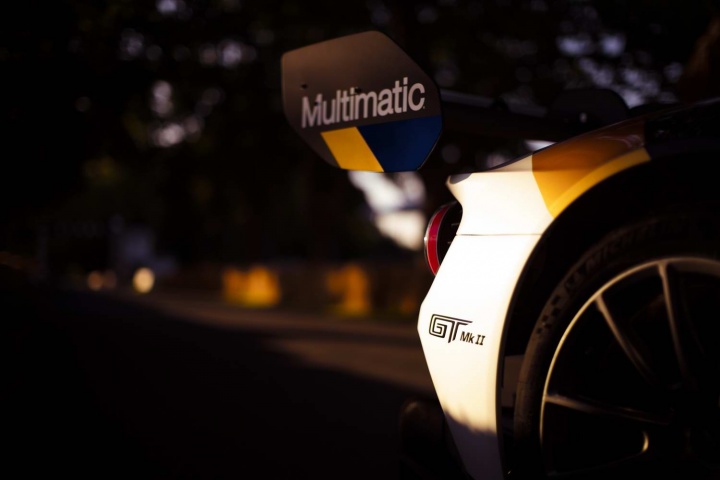Unfettered by racing regulations, Ford has revealed the astonishing GT MkII at the Goodwood Festival of Speed. Its name is a direct nod to the 1960s GT40, which came in MkI, MkII, MkIII and MkIV variants that were all developments of the same theme. Tellingly, and poignantly, it was the GT40 MkII which romped to a 1-2-3 victory in the 1966 edition of the Le Mans 24-hour race, so this 2020 MkII has something of a colossal reputation to live up to.
Absolute power...
Ford has sold the current GT as both a road-going version and also the race car, which competes in the FIA World Endurance Championship (the WEC, of which Le Mans is a part) and the IMSA WeatherTech SportsCar Championship, a North American sports car racing series. The GT and the GT race car were developed alongside one another, to the point the road-going version is pretty much the racer, only with some licence plates attached... and a whole heap more power. Regulations mean the racing Ford has to be limited to around 500hp, but the road-going version delivers 656hp and 746Nm of torque.
Well, the GT MkII rather eclipses those numbers, as well. This combines the ultimate power of the road-going GT's V6 twin-turbo EcoBoost 3.5-litre engine (plus a bit more besides) with some of the aerodynamic know-how of the racer. It has been built by Ford Performance and Multimatic Motorsports, the competition arm of the fabled Canadian engineering firm, and the MkII is a limited-edition, track-only GT which doles out a terrific 700hp.
Seven-figure price tag
Just 45 examples of the GT MkII will be built, with a starting price of around $1.2 million (€1.06m) apiece. It will be constructed on the same Markham, Ontario, line as the regular GT but will then be transferred to a specialist facility at Multimatic to be turned into a GT MkII. Aero and engine improvements mean it is one seriously unrestrained piece of kit; the large, dual-element rear wing summons up more downforce than the GT race car, with an all-new front splitter, a rear diffuser, louvres in the wings and dive planes all helping to balance out the aerodynamics.
All told, the MkII can generate more than 400 per cent ADDITIONAL downforce than the road-going GT, while its aero, race-proven suspension and Michelin Pilot Sport racing tyres mean it can pull more than 2g of lateral grip. Oof.
Lighter and gruntier
Ford has decided to junk the adjustable ride height and drive modes from the street version of the GT for the MkII, which means it is lighter to the tune of 90kg. Instead, five-way adjustable DSSV shock absorbers work with a fixed and lowered ride height to keep the handling sharp and the aerodynamics efficient.
In the middle is that mighty iteration of the 3.5 V6, delivering 200hp more than the race car. It is paired to the same seven-speed dual-clutch transmission as the GT road car but with special calibration for the track-exclusive application in the MkII
Cool runnings
To ensure it can withstand the heat of repeated high-speed track work, the MkII's cooling has been seriously uprated. A high-capacity, outboard-mounted air-to-air chargecooler is equipped with water-spray tech, this little doozy automatically firing atomised water onto the cooler in high-temperature situations. There's a roof-mounted intake, too, which is reminiscent of the race car's engine-air intake - however, on the MkII, it feeds auxiliary engine, clutch and transmission coolers, rather than providing direct intake, to ensure everything stays nice and frosty during track-day duty.
Stops as well as it goes
As the engine's up to 700hp, the brakes have been beefed up too. The GT MkII has the street version's carbon-ceramic Brembo discs, measuring 394mm at the front and 358mm at the rear. Forged aluminium 19-inch alloys are shod in Michelin Pilot Sport GT tyres, while the front fascia and bonnet of the MkII are very similar to the road-going GT. Inside, a bespoke Sparco racing seat with a six-point harness is fitted, while a passenger seat is optional. A full MoTeC data-logging system is provided and it also doubles as a display for the rear-view camera.
Live those motor racing dreams...
The GT MkII will be sold directly to customers by Multimatic, rather than Ford itself, and those interested in splashing out can contact Multimatic via FordGTMkII.com.
Hau Thai-Tang, Ford chief product development and purchasing officer, said: "The GT MkII unleashes the full performance potential of the Ford GT without any artificial performance limitations dictated by racing sanctioning bodies. It's the closest GT owners can get to the Le Mans-winning performance and exhilarating feeling of crossing the finish line in the Ford GT race car."
And Larry Holt, Multimatic's chief technical officer, added: "The true off-the-hook performance capability of the GT hasn't yet been fully showcased. The road car is obviously limited by the many global homologation requirements that it must comply with, and the race car suffers from the restriction of the dreaded Balance of Performance, resulting in it being 150hp down to the road car. The MkII answers the regularly asked question of how would the car perform with all the limitations lifted: the answer is 'spectacularly'."























